Kayak fishing has emerged as a popular outdoor activity that combines sport with an intimate wildlife encounter, allowing anglers to fish with minimal environmental impact. A fishing kayak equipped with the right gear is essential for stability, comfort, and success in various water conditions. From mastering basic skills like maneuvering and casting from a seated position to advanced techniques like sight fishing, proficiency grows over time with practice. The sport emphasizes sustainability and conservation, encouraging practices such as 'Catch, Photo, Release' to preserve the aquatic ecosystems. Kayak fishing clubs foster a sense of community among enthusiasts, offering opportunities to share knowledge, enhance skills, and engage in conservation efforts. Whether targeting species like bass, salmon, or trout across diverse regions like the Great Lakes, Puget Sound, or Pacific Northwest, kayak fishing presents a rewarding and environmentally conscious way to enjoy the thrill of catching fish from the serenity of a kayak.
Embark on a journey through the serene waters where fishing meets adventure. This article serves as your compass, guiding you through the world of recreational and fishing options with a focus on fishing kayaks. Whether you’re an experienced angler or a novice looking to explore, we’ll navigate the best models in ‘Unveiling the Best Fishing Kayaks for Enthusiasts: A Buyer’s Guide.’ Discover the essential features and specifications that distinguish one kayak from another in ‘The Anatomy of a Fishing Kayak.’ For those eager to cast their lines, ‘Top Destinations for Kayak Fishing Across Different Regions’ will introduce you to prime fishing spots. Gear up with the right tackle and essential gear in ‘Essential Gear and Tackle for Kayak Anglers,’ ensuring your experience is both productive and enjoyable. Learn the ropes with our ‘Mastering the Art of Kayak Fishing: Tips and Techniques for Beginners.’ Understand the environmental considerations and adopt sustainable practices in ‘The Environmental Impact of Kayak Fishing and How to Fish Responsibly.’ Lastly, discover the sense of community and shared passion within ‘Community and Camaraderie: Joining Kayak Fishing Clubs and Events’ to enhance your angling journey. Dive into the complete guide to make the most of your fishing kayak experience.
Unveiling the Best Fishing Kayaks for Enthusiasts: A Buyer's Guide
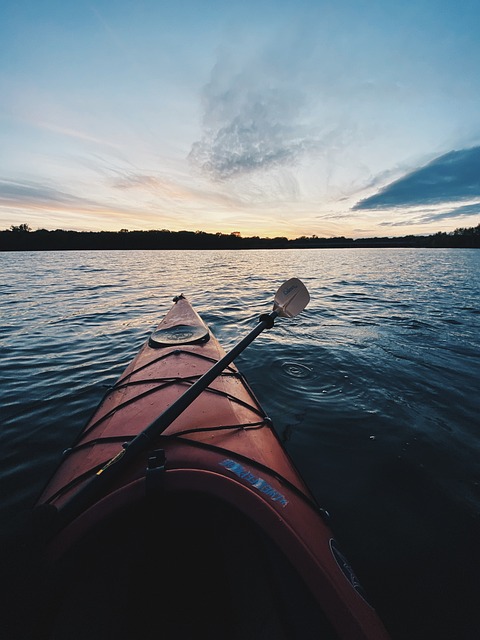
When venturing into the realm of recreational fishing, a fishing kayak offers unparalleled access to quiet waters and secluded spots where fish abound. For those eager to enhance their angling experience, selecting the best fishing kayak is paramount. This buyer’s guide delves into the features that distinguish ordinary kayaks from those specifically designed for fishing enthusiasts. Stability, maneuverability, and storage are critical considerations when choosing a kayak. A stable platform allows anglers to cast lines confidently without tipping over, while maneuverability is essential for navigating through tight spaces or following fish movement. Ample storage space is necessary for carrying fishing gear, extra paddles, and any provisions for a full day on the water.
The hull design of a fishing kayak also plays a significant role in its performance. Kayaks with a wider beam offer greater stability, which is ideal for those new to kayaking or for fishing in windy conditions. On the other hand, longer, narrower kayaks might be more suitable for speed and tracking, essential for paddlers who cover vast distances in search of different fishing spots. Additionally, integrated features like rod holders, live wells, and transducer scupper holes for fish finders are increasingly common in high-quality fishing kayaks. These features are tailored to enhance the fishing experience, making it easier to deploy multiple lines or keep caught fish alive until you’re ready to release or bring them home. When selecting a fishing kayak, it’s essential to consider how these features align with your specific needs and preferences, ensuring that your investment serves you well on the water.
The Anatomy of a Fishing Kayak: Features and Specifications That Matter
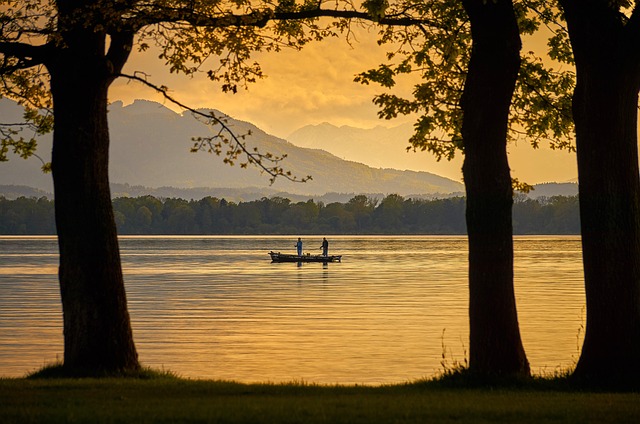
A fishing kayak is meticulously designed to offer anglers a stable and efficient platform for navigating shallow waters, reaching prime fishing spots, and maneuvering in tight spaces where larger boats cannot venture. The anatomy of a fishing kayak encompasses several key features and specifications that are critical for both comfort and functionality on the water.
Firstly, the hull shape is engineered to provide stability without compromising speed. A wider beam aids in maintaining balance, which is particularly important when casting or fighting a catch. The hull’s design also influences tracking, allowing the kayak to move straight despite wind and current. Additionally, the choice between a sit-on-top or sit-inside kayak depends on personal preference, local water conditions, and desired fishing style. Sit-on-top models offer easier entry and exit, self-bailing capabilities, and are generally more stable, making them favorable for warm climates and calm waters. In contrast, sit-inside kayaks provide better protection from the elements and can be advantageous in cooler conditions or more challenging waters.
In terms of onboard features, fishing kayaks come equipped with a variety of compartments to store gear securely. Dry storage areas are essential for keeping valuable electronics like fish finders or smartphones safe and dry. Integrated rod holders and ample space for mounting additional accessories, such as GPS units or camera attachments, are also important considerations. The kayak’s deck design often includes molded-in standing platforms or adjustable footrests to accommodate different body types and facilitate standup fishing for a broader angling experience. Lastly, the choice of materials for the kayak’s construction, such as polyethylene or composite materials, affects its durability, weight, and resistance to environmental factors, all of which are significant factors in a fishing kayak’s longevity and performance.
When selecting a fishing kayak, it’s essential to consider the specific features and specifications that align with your angling needs and preferences. Whether it’s the hull design, storage solutions, or the ability to stand and fish, each aspect of a fishing kayak’s design contributes to an enhanced experience on the water.
Top Destinations for Kayak Fishing Across Different Regions
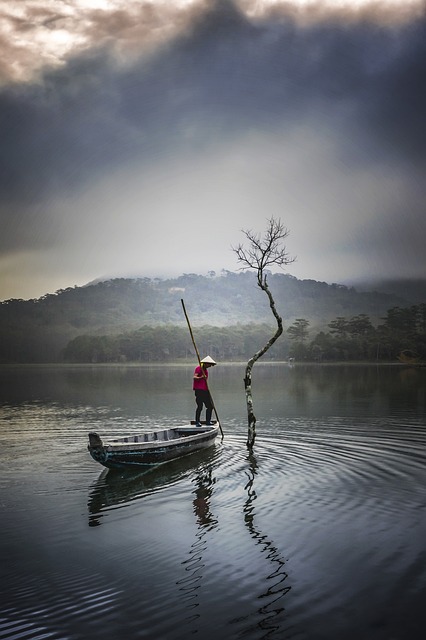
Anglers seeking serene and productive waters for kayak fishing will find a wealth of top-tier destinations across various regions. The coastal waters off the shores of Florida, particularly in areas like the Everglades, offer anglers the chance to navigate mangrove tunnels and fish-rich flats where species like tarpon, snook, and redfish are abundant. Kayak fishing here combines the tranquility of nature with the thrill of catching prized sportfish.
In the Pacific Northwest, the intricate system of rivers, bays, and inlets found in places like Puget Sound provide ideal conditions for kayak anglers. Here, the rich nutrient flows from the rivers create a fertile environment for salmon, steelhead, and sea bass. The combination of stunning natural beauty and diverse fishing opportunities makes this region a must-visit for any fishing kayak enthusiast. Additionally, the Great Lakes offer vast expanses of freshwater where kayakers can target walleye, perch, and lake trout. Whether you’re an experienced angler or a novice looking to explore, these destinations showcase the best of what kayak fishing has to offer across different regions.
Essential Gear and Tackle for Kayak Anglers
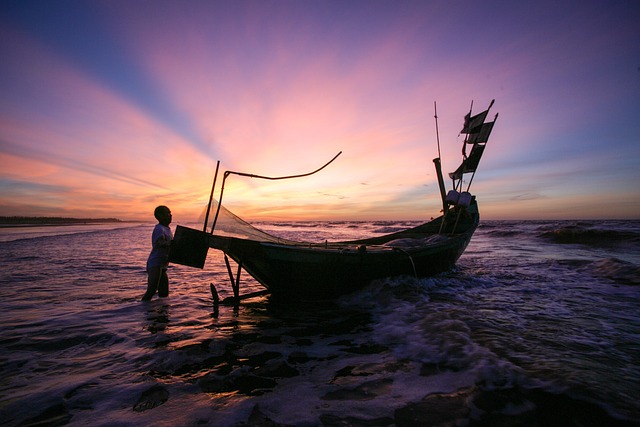
When embarking on a kayak fishing adventure, having the right gear and tackle is paramount for a successful outing. A well-equipped fishing kayak should be armed with essential fishing equipment tailored to the specific environment and fish species you aim to catch. Start with a reliable kayak designed for fishing, featuring ample space for gear, comfortable seating, and stability on the water. The fishing kayak should have designated rod holders to keep your rods within reach and secure while you paddle or navigate tight spaces. Anglers must select a rod and reel combination suitable for the type of fish they seek. Spinning reels are often favored for their ease of use, while baitcasting reels offer greater control over larger baits.
A sturdy paddle is essential to maneuver effectively around cover and through waterways. Consider a paddle with an adjustable length to ensure comfort and efficiency whether you’re standing or seated. Essential tackle includes a variety of lures, hooks, sinkers, and leaders. Soft plastics and topwater lures are popular choices for kayak anglers targeting bass, while live bait rigs can be effective for species like catfish and carp. A quality cooler with a dry storage area keeps your catch fresh and provides additional seating. Safety gear such as a personal flotation device (PFD) and a bilge pump are critical for unexpected situations on the water. Lastly, a well-stocked first aid kit and essential tools like pliers, knives, and a multi-tool can handle any repairs or emergencies that may arise during your kayak fishing journey. With the right gear and tackle, kayak anglers can maximize their experience on the water, focusing on the serenity of nature and the thrill of the catch.
Mastering the Art of Kayak Fishing: Tips and Techniques for Beginners
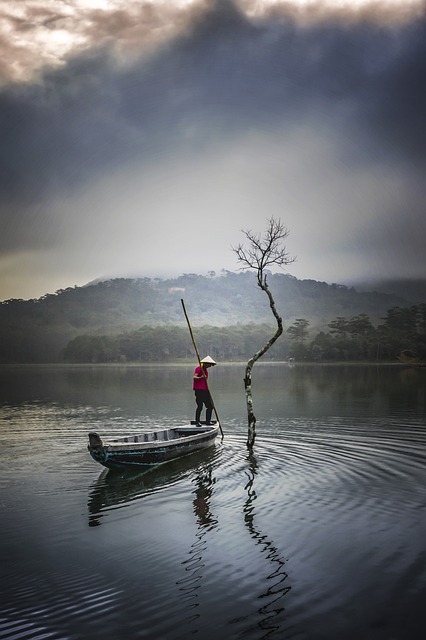
Embarking on the journey to master kayak fishing is an exciting endeavor that blends tranquil waters with the thrill of angling. A fishing kayak offers anglers a unique perspective on their favorite water bodies, providing access to remote spots and quiet areas where fish are more likely to bite. For beginners, it’s essential to start with the right equipment; choose a stable and comfortable fishing kayak that suits your body type and the types of waters you plan to navigate. Learning how to maneuver effectively without tipping over is crucial for safety and confidence on the water. Practice in calm conditions can help you get accustomed to the kayak’s movements and responses.
Once you’re comfortable with your kayak, it’s time to focus on fishing techniques. Understanding local fish species and their habits will significantly increase your chances of a successful catch. Use lightweight, balanced rods that are easy to handle from a seated position. Paddle carefully to approach fish without spooking them. Employing the right bait and lures for the water and time of day is also key. Beginners should start with simpler techniques like casting near structure or using live bait to entice fish. As you progress, experiment with advanced methods like sight fishing in clear waters, where you can spot and cast to individual fish. Remember, patience and a willingness to learn are your most valuable tools in mastering the art of kayak fishing. With practice and persistence, you’ll enhance your skills and appreciate the serene beauty that only kayak angling can offer.
The Environmental Impact of Kayak Fishing and How to Fish Responsibly
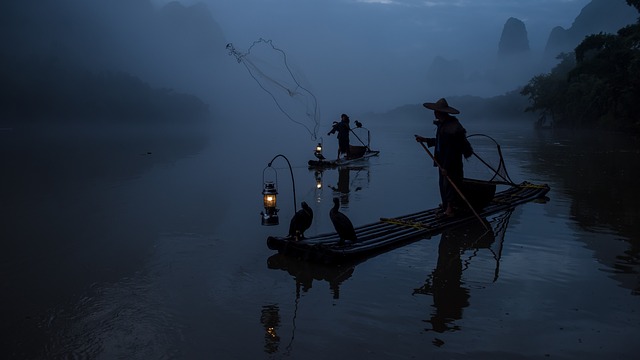
Kayak fishing has emerged as a popular recreational activity, offering anglers a unique and immersive experience on the water. This form of fishing not only provides a quiet and intimate connection with nature but also carries environmental considerations. The environmental impact of kayak fishing is significant; it includes potential disturbances to aquatic ecosystems, the risk of introducing non-native species, and the possibility of leaving behind waste that can pollute waterways. To mitigate these impacts, responsible anglers adhere to ‘Catch, Photo, Release’ practices, minimizing their ecological footprint while capturing memories. They also take care to use kayaks constructed from sustainable materials and powered by silent, eco-friendly propulsion systems to reduce noise pollution and maintain a low profile within sensitive environments. Additionally, responsible fishers ensure they have the necessary permits and follow local regulations to protect biodiversity and maintain healthy fish populations. By being mindful of their actions and conscious of the delicate balance of aquatic habitats, kayak fishermen can enjoy their sport while preserving the natural beauty and ecological integrity of the waters they visit.
Community and Camaraderie: Joining Kayak Fishing Clubs and Events
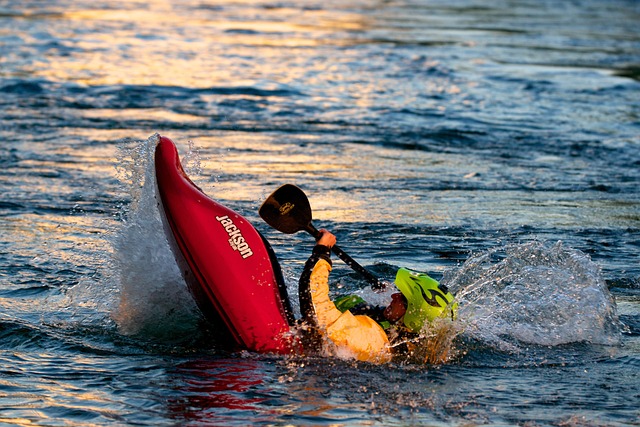
Exploring the recreational and fishing options available to enthusiasts often leads to the discovery of kayak fishing, a pastime that combines serene paddling with the thrill of angling. For those seeking to enhance their experience, joining local kayak fishing clubs or attending events can be both enriching and rewarding. These groups offer a platform for anglers to share knowledge, resources, and techniques, fostering a sense of community and camaraderie that is hard to replicate elsewhere. Participants find themselves part of a collective that not only values the sport but also the preservation of aquatic environments. Engaging with fellow fishing kayak enthusiasts through club activities or shared excursions can lead to lifelong friendships and a supportive network that enriches both the individual’s fishing skills and their overall well-being. The collective experiences and mutual support found within these clubs often amplify the joys of kayak fishing, making it an even more enjoyable pursuit. Whether it’s swapping stories after a successful catch or collaborating on environmental conservation efforts, the community aspect of joining such clubs is unparalleled. With each paddle stroke in sync with like-minded individuals, fishing kayaks become vessels for adventure and togetherness, offering participants much more than just the chance to fish.
